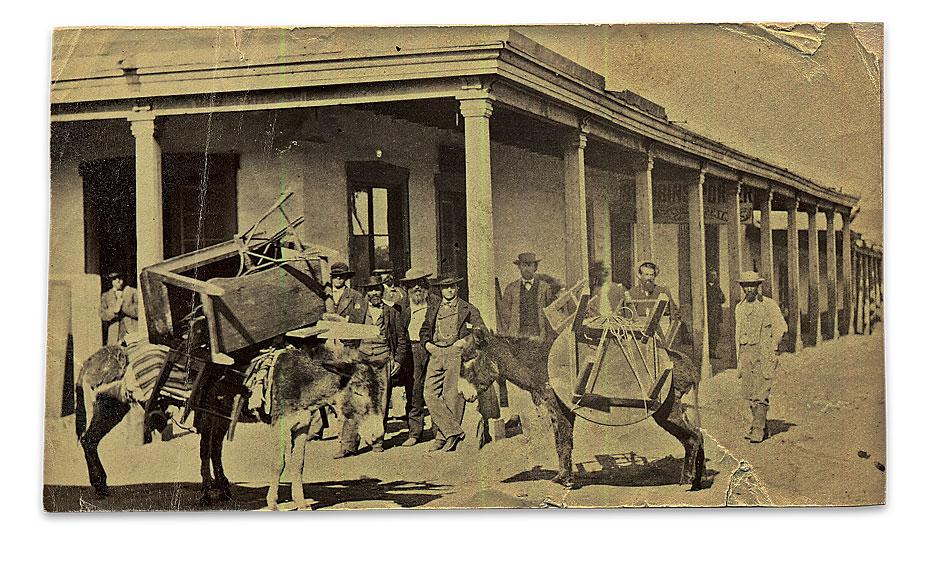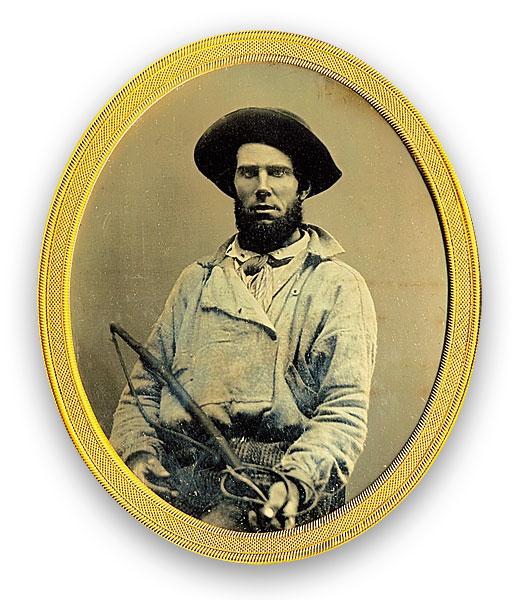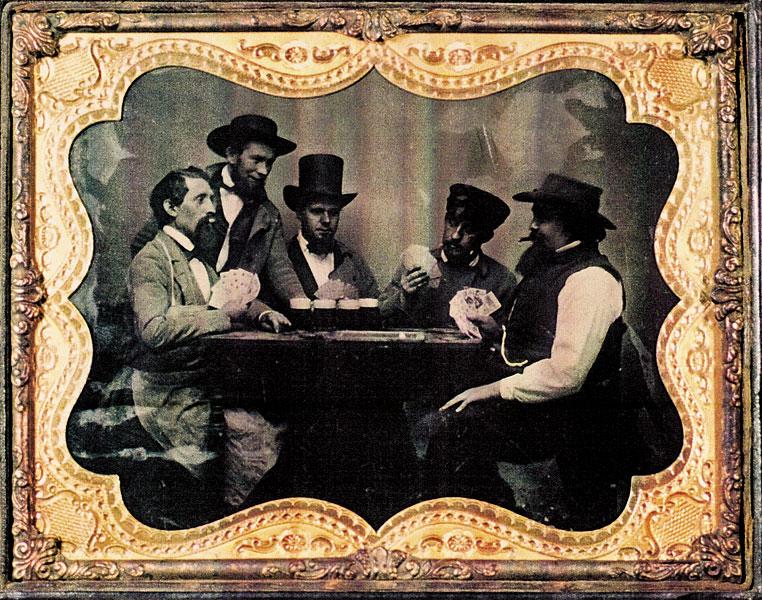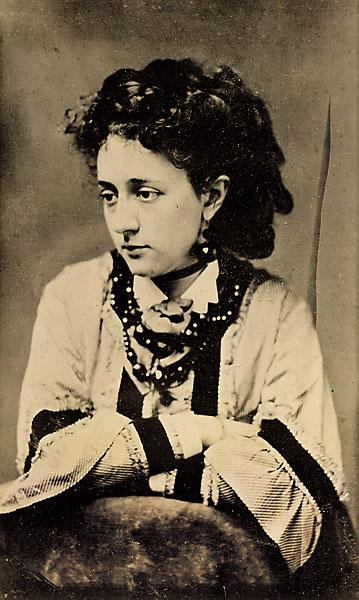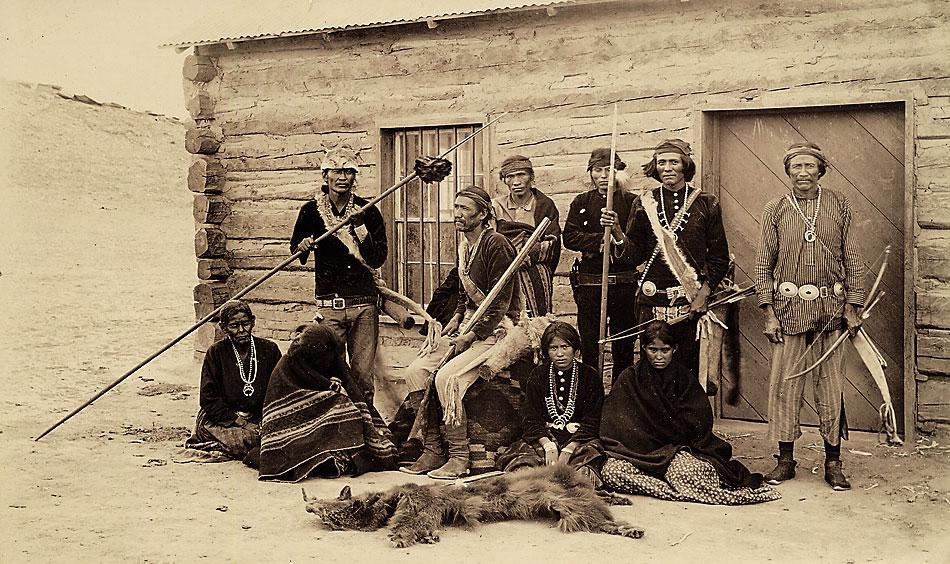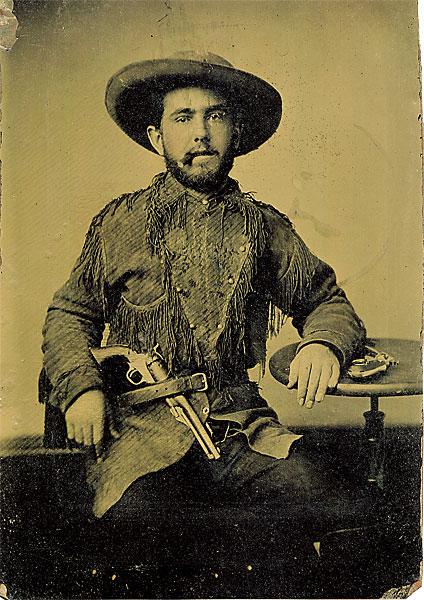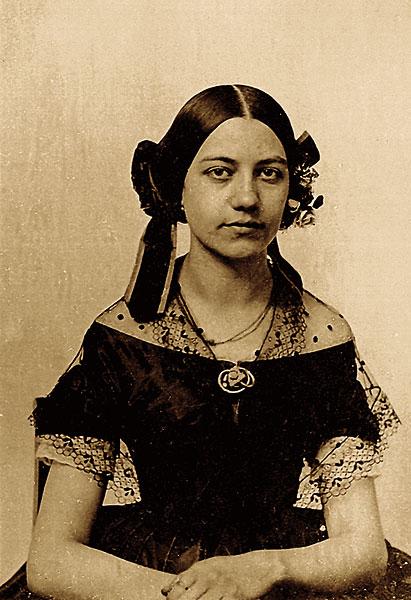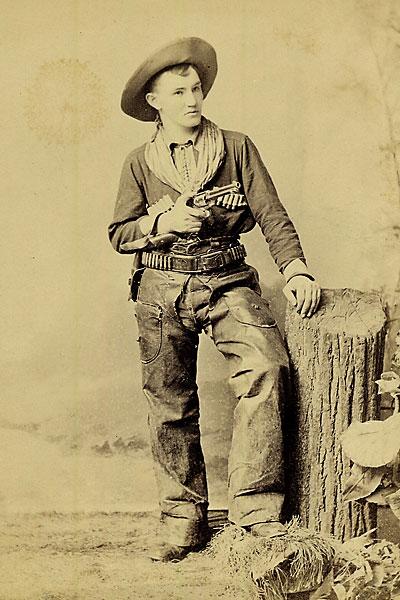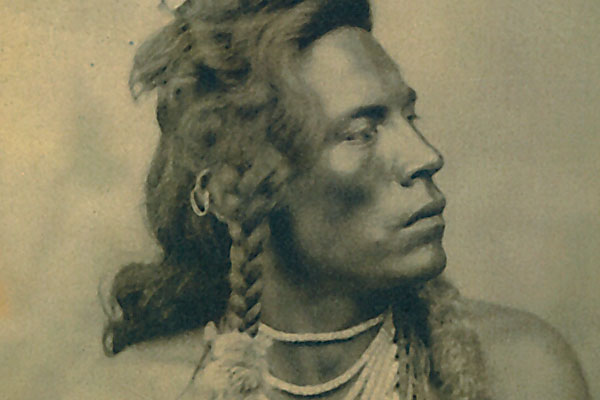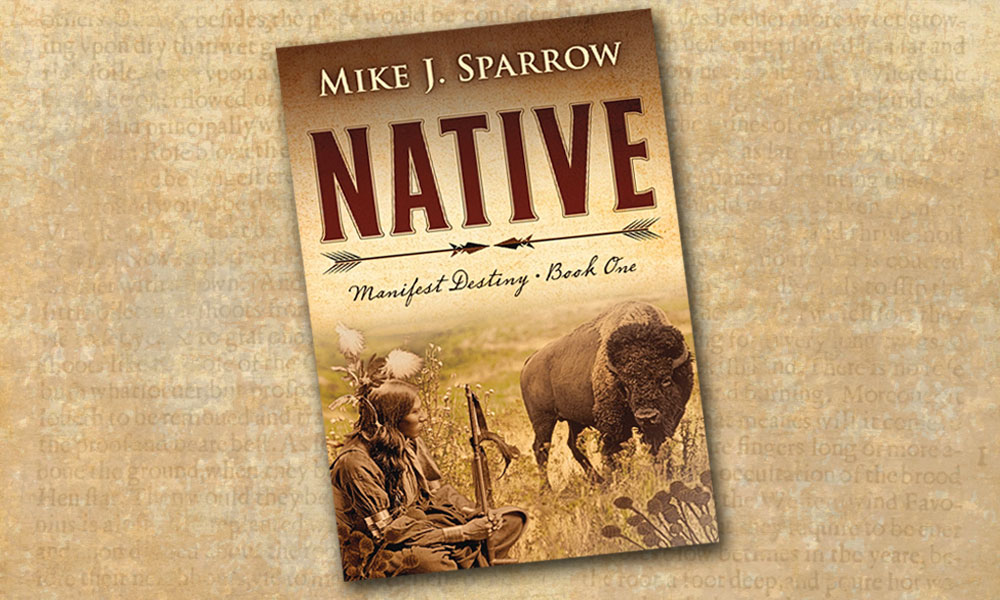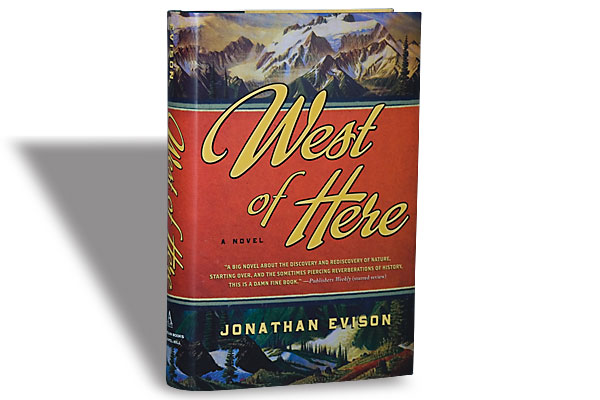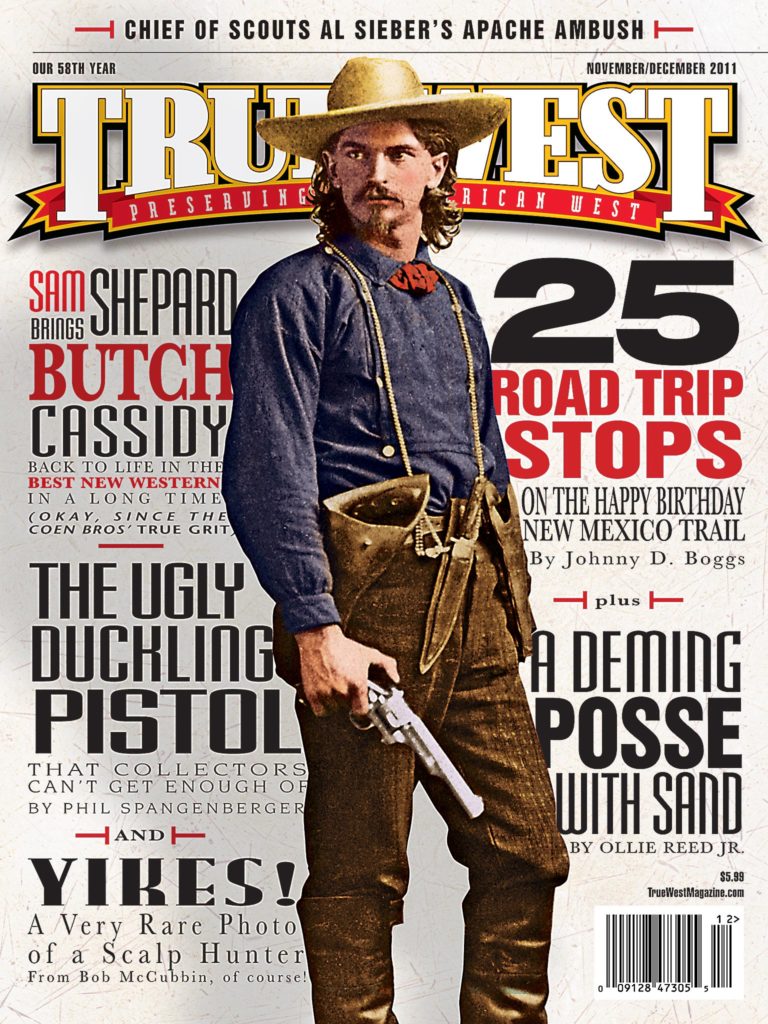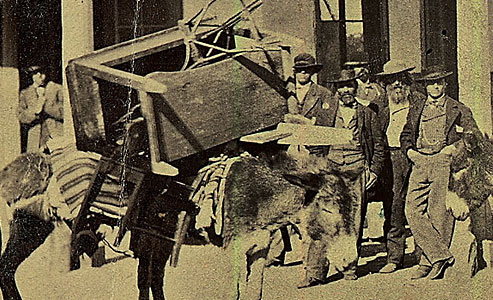 “For many, the words ‘Wild West’ bring to mind the geography and lore of the trans-Mississippi United States during the late 1800s,” writes Michael Wallis, in his 2011 book, The Wild West: 365 Days.
“For many, the words ‘Wild West’ bring to mind the geography and lore of the trans-Mississippi United States during the late 1800s,” writes Michael Wallis, in his 2011 book, The Wild West: 365 Days.
“Although it is true that the thirty-five years between the close of the Civil War and the end of the nineteenth century saw many of the best-known events, as well as the most romanticized individuals associated with the West, the real origins of Wild West culture began long before the Civil War….”
To provide a photographic glimpse of Westerners in those early days, we selected rare photos featured in Wallis’s tome, with the help of our publisher emeritus, Robert G. McCubbin, who served as pictures editor for the book. Before the “Free States” and the “Slave States” began clashing in 1861, these folks helped drive the engine of economic prosperity out West.
—The Editors
The Wild West: 365 Days, by Michael Wallis and Suzanne Fitzgerald Wallis, examines events between 1830 and 1930 to provide a more complete picture of the West. Featured here are vignettes adapted from the book. Purchase your copy of Wallis’s book at AbramsBooks.com, MichaelWallis.com or at your local bookstore.
Photo Gallery
Opened in 1821 by Missouri trader William Becknell, the storied Santa Fe Trail was the first international pathway connecting the Mexican province of New Mexico with the western frontier of the United States. For sixty years, countless traders, soldiers, settlers and large caravans of freight wagons made the 780-mile journey from Westport on the Missouri River to Santa Fe. But by the early 1880s, the well-worn trail had become obsolete with the advent of the railroad.
–All photographs courtesy Robert G. McCubbin Collection
The above photo is a busy street in the Mexican settlement of Santa Fe, the destination of traders traveling the Santa Fe Trail from Missouri.
Whether transporting people or freight, every party moving West required plenty of pauses to refresh and replenish. Bullwhackers, the men and sometimes women who walking alongside the freight wagons cracking bullwhips to keep the yoked oxen moving, made camp every evening to feed, water and rest both themselves and their beasts.
Above is a bullwhacker with his whip, circa 1850s.
About the same time that the Pikes Peak rush was on, the Comstock Lode was discovered in the Washoe Mountains of what was soon to become Nevada Territory. Those who benefited called the find history’s greatest bonanza in gold and silver. The glut of mining riches also turned the boomtown of Virginia City into the most important settlement between San Francisco and Denver. At its zenith, Virginia City boasted thirty thousand citizens, many of them former prospectors who had become filthy rich and built lavish mansions filled with furniture and art imported from Europe and Asia. Fashionably dressed gents carried one-thousand-dollar watches, attended Shakespeare plays, dined on champagne and caviar delivered on ice by Wells Fargo, and used toothpicks made of gold.
Pictured above is an ambrotype of a high-stakes card game, circa 1850s.
During a tour of the United States, Lola Montez arrived in California in 1853 and stayed for two years. She quickly became known for performing her famously suggestive “Tarantula Dance,” a provocative ballet in which Lola pretended to become entangled in a spider’s web and discovered spiders hiding in the folds of her flowing gown. As she waved her arms, leaped in the air and vigorously shook her clothing, revealing her petticoats, the audiences sat spellbound. At the dock in 1855, Lola broke into tears as she departed San Francisco bound for Australia.
Shown here is Lola Montez at the height of her stage performance career.
The name Navajo derives from the Spanish for “people with the big fields,” but members of the tribe referred to themselves in their own language as the Dine, meaning “the People.” Cousins of the Apaches, the Navajos first acquired sheep—a significant part of their lifestyle—from the Spanish who also tried to enslave them. Traditionally the largest Indian tribe in the Southwest, the Navajos had relatively peaceful early relations with the Anglo settlers, but those began to deteriorate around 1850 when a respected tribal leader was killed and the U.S. government began establishing forts in Navajo country.
Above is a Navajo hunting party.
Beginning in the 1830s, one of the most profitable enterprises in the Southwest and Mexico was the human scalp industry. In Mexico alone, between 1835 and 1885, the government—weary of marauding Apaches and Comanches—paid private armies to provide protection. Mostly Forty-Niners in need of grubstake money or former Texas Rangers, these mercenaries hunted down and killed as many Indians as possible, including women and children. Of course, the bounty paid for a scalp depended on the victim’s age and sex. Generally that meant one hundred dollars for a warrior’s scalp, fifty dollars for a squaw’s scalp and twenty-five dollars for all children less than fourteen years of age.
This photograph is a tintype of a scalp-hunting frontiersman with his Colt 1860 Army.
When the Gold Rush began, only two percent of those bound for the “land of milk and honey” were female. By 1857, women accounted for half of the pilgrims on the westbound wagon trains. They worked alongside men in the goldfields, ran boardinghouses and dealt cards. Others turned to prostitution, which, next to gambling, was the most lucrative trade. Some made enough money to integrate into polite society and find respectable husbands. When men could afford it, they sent for their wives and sweethearts. It might have been a man’s world, but plenty of women also “saw the elephant.”
This is a daguerreotype of a Spanish lady in San Francisco, California.
On March 5, 1836—just one day before the Alamo fell during the rebellion in the Mexican state of Texas—Samuel L. Colt founded the firm that would become the oldest manufacturer of repeating firearms in the world. On the frontier, the revolver allowed a man to keep his hands free while he drank or tended to chores. More important, for the first time in history, a man could kill critters or his fellows in rapid succession. A popular saying of the time was “God created men; Colonel Colt made them equal.”
The picture shown is Peter Bogardus, of the famed Wild West show sharpshooting family, with his 1888 Remington pistol with wood grips.


